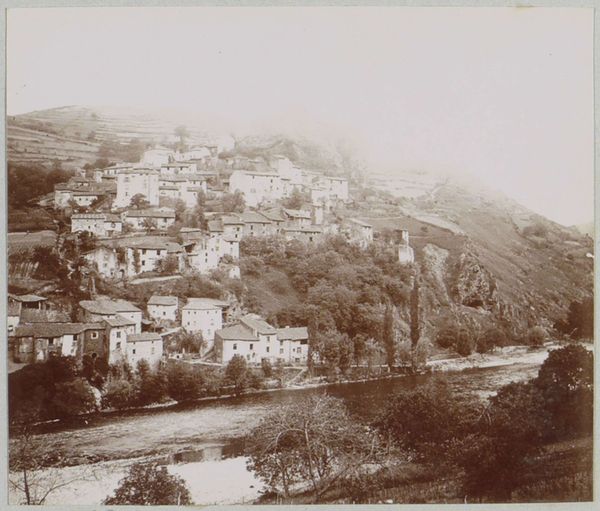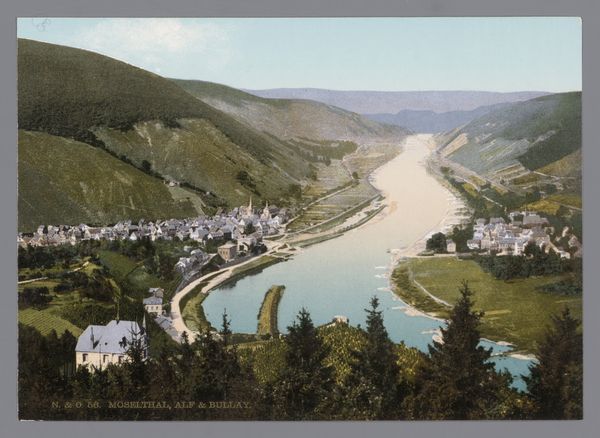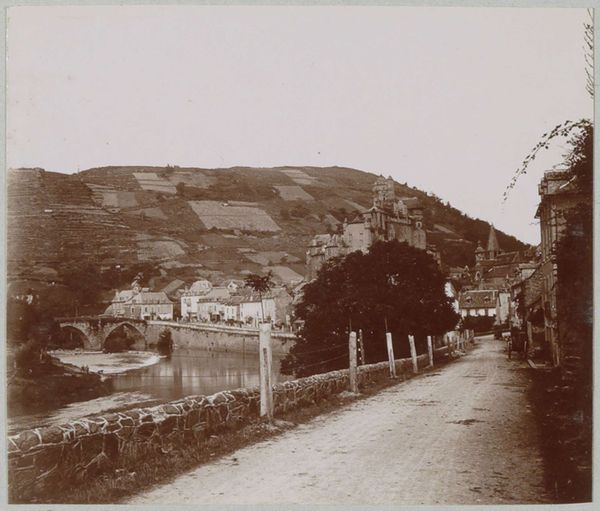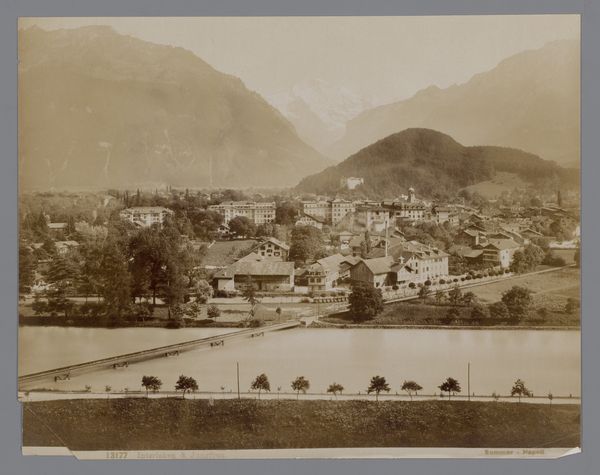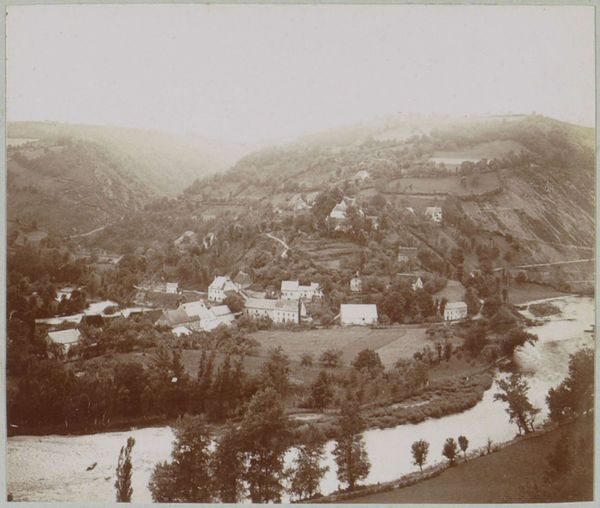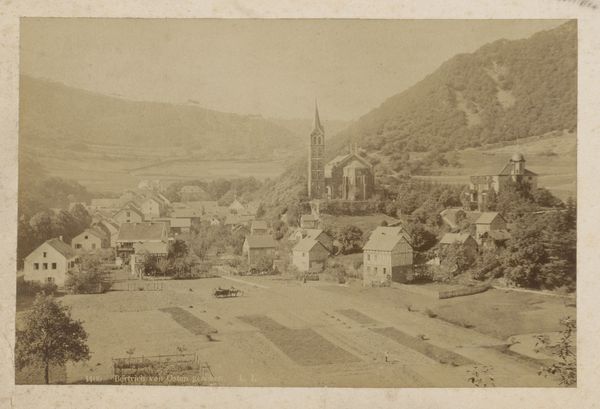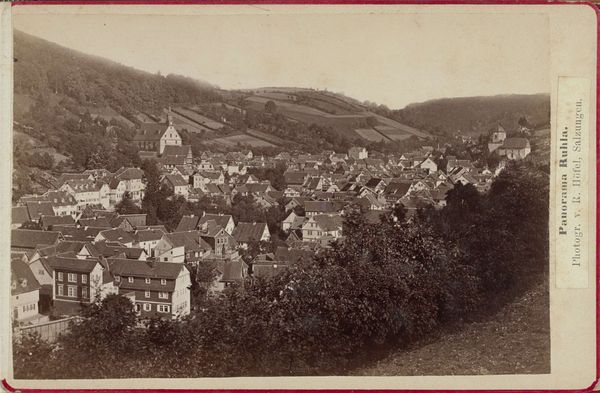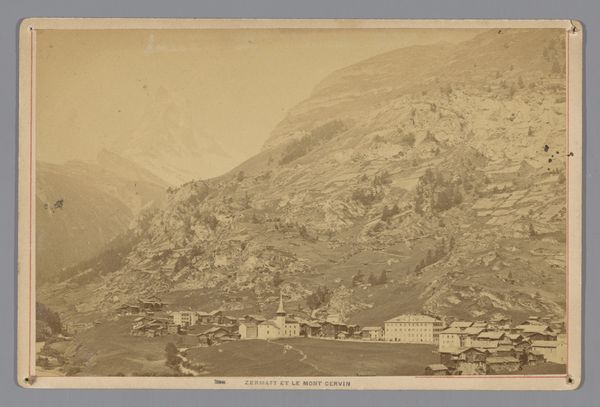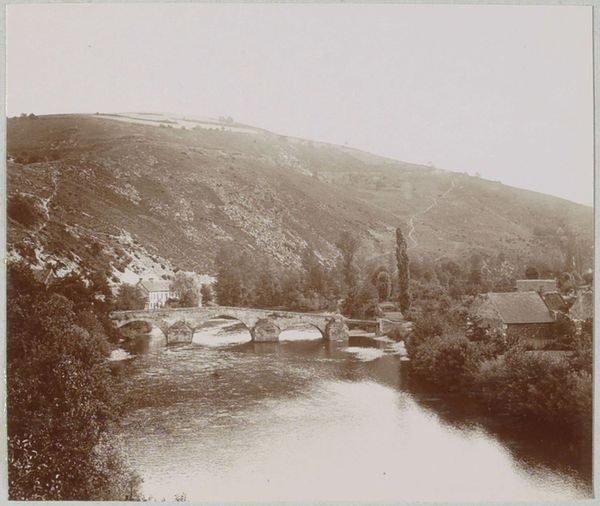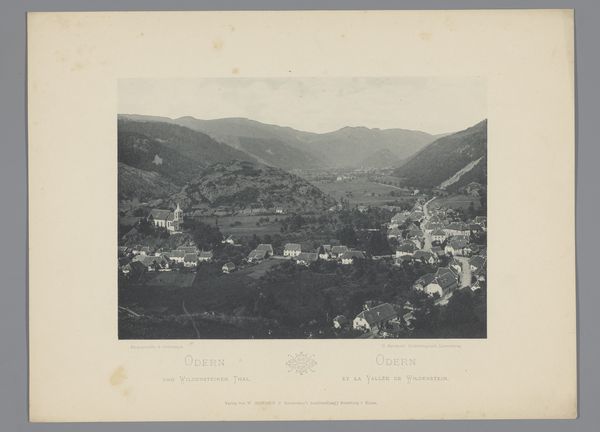
print, photography
#
pictorialism
# print
#
landscape
#
photography
#
cityscape
Dimensions: height 160 mm, width 225 mm
Copyright: Rijks Museum: Open Domain
Editor: So this is "Gezicht op Bad Bertrich," a print, likely a photograph, from around 1889 to 1920, by an anonymous artist and held at the Rijksmuseum. It’s a view of a small town nestled in a valley. It feels very… nostalgic, almost dreamlike, and the printing technique gives it a kind of layered quality. What strikes you most about this piece? Curator: Well, given its likely origin as a mass-produced photograph meant for consumption by tourists, it presents an interesting challenge to traditional art hierarchies. The “artist” here, if we can even use that term, is more akin to a facilitator in a broader process of material production. What materials were available to the photographer and printer at that time? And what type of labor made it possible to create and circulate? Editor: I hadn't really considered it as something “mass-produced”. How does that change our perspective? Curator: Consider how the photograph becomes an object, a commodity almost. The picturesque scene, carefully framed, is meant to be consumed visually, but it’s also a tangible item for purchase. We must ask who benefited economically from these prints? And who had access to this representation of Bad Bertrich, shaping their perception of the region, versus those living and working there who made this all possible? Editor: So you're saying it's less about the artistic skill and more about the whole production line, from taking the photo to selling it as a memento? Curator: Exactly! Think about the social conditions. This era saw massive industrial expansion and rise of leisure activities. These photos catered to a burgeoning middle class with disposable income and a desire to document their travels, and reflect larger historical and economic forces at play. The appeal relies less on the artist’s vision and more on the ease of reproducibility, the consumption of scenery, and its accessibility as a purchasable souvenir. Editor: That really opens up a different way of seeing this piece. Instead of admiring the idyllic landscape, we're dissecting the system that allowed it to be captured and distributed. Thanks for your perspective, it makes me want to examine how labour and commodity shape art consumption.
Comments
No comments
Be the first to comment and join the conversation on the ultimate creative platform.
